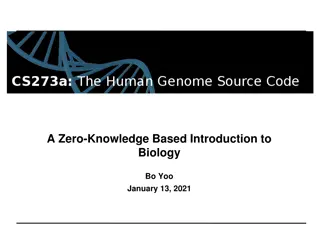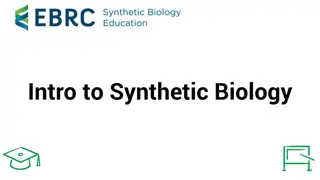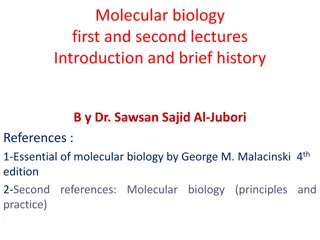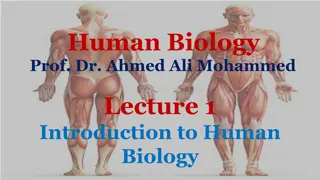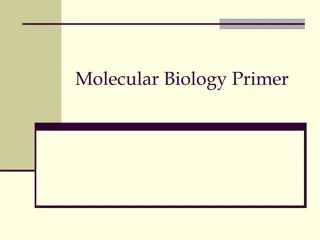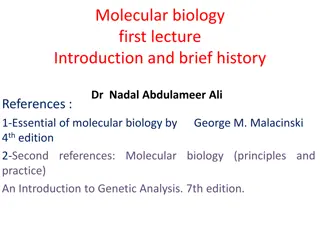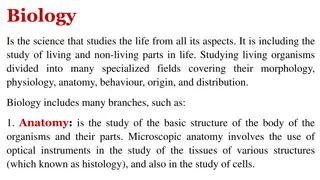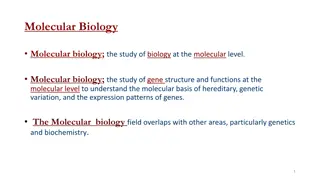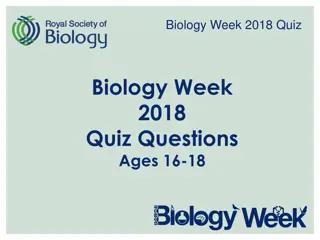Human Biology introduction
Dive into the fascinating world of human biology, including anatomy, growth, nutrition, and more. Explore the branches of biology like Zoology and Botany, and learn about the components and functionality of compound microscopes. Discover the intricacies of cellular organization, physiology, and genetics, and unravel the mysteries of life on Earth through the lens of biology and microscopy.
Download Presentation

Please find below an Image/Link to download the presentation.
The content on the website is provided AS IS for your information and personal use only. It may not be sold, licensed, or shared on other websites without obtaining consent from the author.If you encounter any issues during the download, it is possible that the publisher has removed the file from their server.
You are allowed to download the files provided on this website for personal or commercial use, subject to the condition that they are used lawfully. All files are the property of their respective owners.
The content on the website is provided AS IS for your information and personal use only. It may not be sold, licensed, or shared on other websites without obtaining consent from the author.
E N D
Presentation Transcript
Human Biology introduction
Biology Biology : science that attempt to describe and understand both unity and diversity of life on earth. Human biology : study of the anatomy and all the human activities such as growth , nutrition , reproduction , digestion , excretion , secretion ..etc. Biology is divided into two sub siences , these are :- Zoology : deals with the study of animals . Botany :deals with the study of plants.
Both Zoology and botany are branched into :- Morphology : the study of form and its development includes :- Cytology : the study of cell structure. Histology : the study of tissue structure. Anatomy : the study of cross structure. Embryology : the study of formation and development of embryos. Physiology : the study of lifes functions , how cells, organs or entire organisms function. Ecology : the study of interactions of organisms with one another and with their physical environment. Geneties : the study of variation and heredity ( ) All living things on eath are characterized by cellular organization , growth , homoestasis , reproduction and heredity these characterized define the life. Homoeostasis : is maintaining relatively stable the internal condition in organism.
Compound microscope A compound microscope is a microscope which uses a lens close to the object being viewed to collect light (called the objective lens) which focuses a real image of the object inside the microscope. That image is then magnified by a second lens or group of lenses (called the eyepiece) that gives the viewer and enlarged inverted virtual image of the object. The use of a compound objective/eyepiece combination allows for much higher magnification, reduced chromatic aberration and exchangeable objective lenses to adjust the magnification. A compound microscope also makes more advanced illumination setups, such as phase contrast possible. Parts of the compound microscope : 1-Base or foot 2-Arm 3-Stage 4-Body tube 5-Rotting (or revolving )nose-piece 6-Objectives 7-Eye (or ocular)piece 8-Coarse adjustment 9-fine adjustment 10-Sub-stage condenser 11-Projection lens 12-Specimen holder movement
Components of microscope Eyepiece (ocular lens) (1) Objective turret, revolver, or revolving nose piece (to hold multiple objective lenses) (2) Objective lenses (3) Focus knobs (to move the stage) Coarse adjustment (4) Fine adjustment (5) Stage (to hold the specimen) (6) Light source (a light or a mirror) (7) Diaphragm and condenser (8) Mechanical stage (9)


![❤[READ]❤ Cosmic Biology: How Life Could Evolve on Other Worlds (Springer Praxis](/thumb/21556/read-cosmic-biology-how-life-could-evolve-on-other-worlds-springer-praxis.jpg)



